#bullerswood carpet
Text

William Morris and John Henry Dearle
The Bullerswood Carpet
1889, London, England
#william morris#john henry dearle#british design#arts and crafts movement#arts and crafts#carpet#carpet design#nature aesthetic#british artist#british art#carpet designer#art history#bullerswood carpet#nature in design#modern art#aesthetictumblr#tumblraesthetic#tumblrpic#tumblrpictures#tumblr art#tumblrstyle#artists on tumblr#aesthetic
539 notes
·
View notes
Text
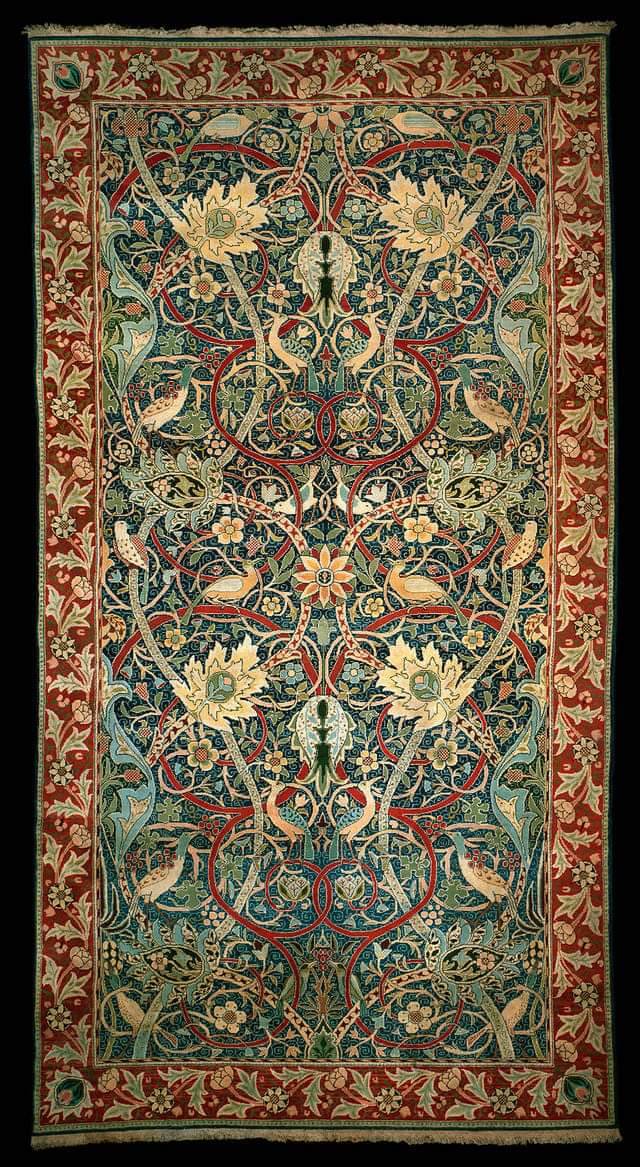
"The Bullerswood Carpet, designed by William Morris and John Henry Dearle, ca.1889. London, England
This hand-knotted carpet is the first weaving of a design made by William Morris and his assistant J.H. Dearle. Two later weavings of the design were made. All of Morris & Co.'s hand-knotted carpets are called 'Hammersmiths' after the location of his London home, where they were first woven.
This example is part of the Morris & Co. furnishings for Bullerswood in Chislehurst in Kent, the home of wool trader John Sanderson. Built in 1866 the house was later altered by Ernest Newton. Two Hammersmith carpets were ordered for the house, one for the hall and this one, designed for the drawing room. Museum records dating from a visit to the house in 1921 state 'it appears that the drawing room was decorated by William Morris under his personal supervision and nothing was allowed to be placed in it in addition to objects executed by himself'.
Although Morris believed that Persian carpets were the greatest ever made, he adopted the coarser Turkish (Ghiordes) knot for his own hand-knotted carpet manufacture. They were woven at a thickness of 25 knots to the square inch. The design includes many motif devised by Morris for carpets. It also shows later, more formal elements characteristic of Henry Dearle's work. There is a strong possibility, therefore, that the carpet was a collaborative project. © Victoria and Albert Museum, London".
> Debra Givens > Treasure Trove of Vintage Pleasures
0 notes
Text
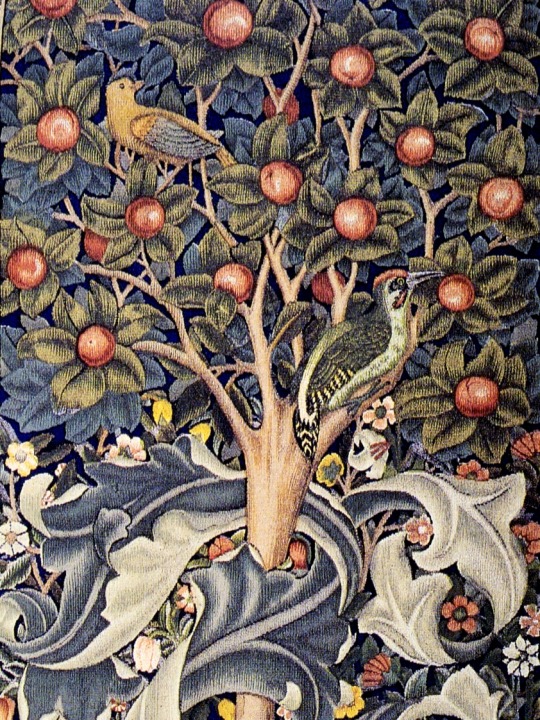

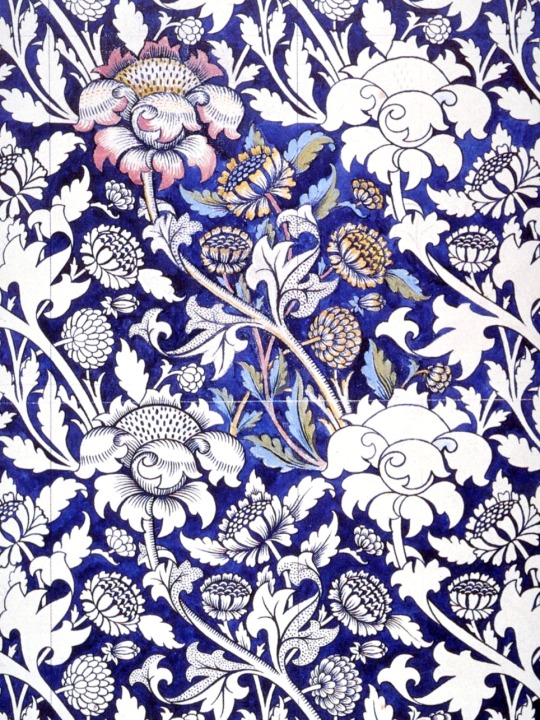


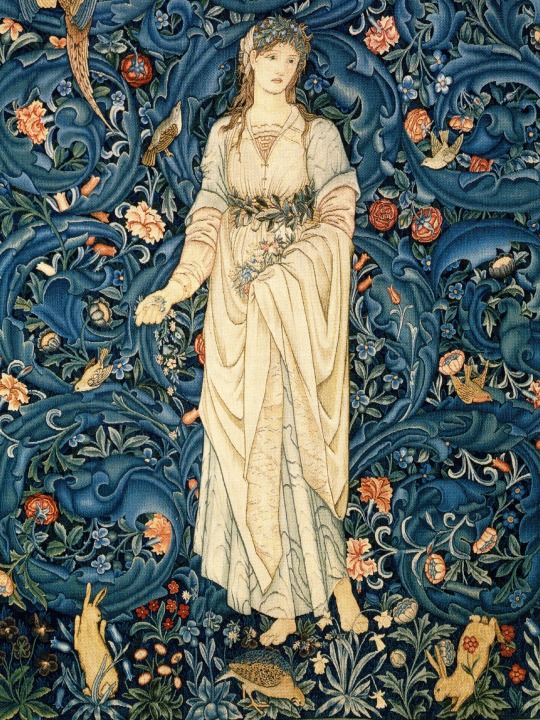




Thoroughness
William Morris (1834-1896), manufacturer, textile designer, printer, writer, poet, lecturer, painter, draftsman and British architect.
A member of the Pre-Raphaelite Brotherhood, this artist had a colossal influence on the Art & Crafts movement in nineteenth-century Britain. Politically, he also influenced the British socialist movement in the 1880s, despite having retracted quickly.
His firm, Morris, Marshall, Faulkner & Co (later Morris & Co.), created in 1861, will produce many stained glass, wallpaper and textiles.
(Tapestries, textiles, and wallpapers, the pictures show, in order: Woodpecker tapestry, 1885 ; Peacock and Dragon, 1878 ; design for indigo-discharge printed textile, circa 1883 ; Acanthus wallpaper, 1875 ; detail of a drawing for the Bullerswood carpet designed by William Morris and John Henry Dearle, circa 1889 ; Flora, designed by Edward Burne-Jones and William Morris, circa 1885 ; Anemone jacquard-woven silk and wool or silk damask fabric, 1876 ; Tulip and Willow printed linen, 1873 ; Kennet indigo-discharge printed textile, 1883 ; and finally, detail of Art Needlework embroidery "Artichoke" in wool on linen, 1890)
#art#art history#19th century#william morris#edward burne jones#john henry dearle#pre raphaelism#pre raphaelite#preraphaelite#art & craft#britain#tapestries#aesthetic#medieval aesthetic#art aesthetic#pre raphaelite aesthetic#pre raphaelite art
1K notes
·
View notes
Photo
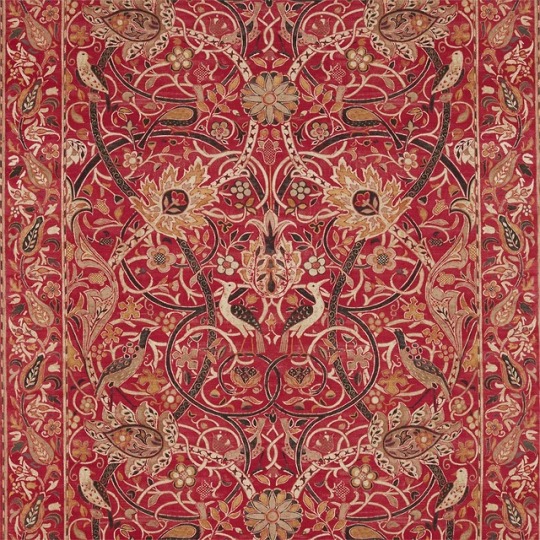
Bullerswood 226392 Paprika/Gold - William Morris ,Morris and Co fabric
British, 1834-1896
* This original design probably came from the enormous Persian original hung by Morris in his dining room at Kelmscott House and is likened to a traditional Persian 'vase carpet'.
* * Part of the Archive IV collection, Bullerswood fabric is inspired by a carpet hand-woven at Merton Abbey and exhibited by Morris & Co. at the 1893 Arts and Crafts Society exhibition.
77 notes
·
View notes
Text
Entry: 2

Bullerswood Carpet, William Morris and John Henry Dearle, about 1889, England. Museum no. T.31-1923. © Victoria and Albert Museum, London

The wood beyond the world, designed by William Morris, published by Kelmscott Press, 1894, England. Museum no. 38041800870107. © Victoria and Albert Museum, London
The Arts and Crafts Movement was all about bringing back the artists hand in the work. With the rise of machines during the Industrial Revolution, the products being made were more about getting out a quantity than the quality or personalization of it. This was the thought for those following this movement. With it, they brought back more laborious, but unique work. Including the above to images done by William Morris. They show these very intricate detailed designs. Morris found inspiration in Medival Art that follows the idea of finely done work showing the craftsmanship of the artist. Morris felt that the current society was going down an ugly path because of its functionality focus on cost and less on the look of the work itself. He thought people were becoming thoughtless of the things they owned. It became about having it rather than appreciating it. I can on some terms agree with Morris’s beliefs. I like his passion for the idea of admiring and being proud of what we make. On the same line, the idea of buying with more purpose of enjoyment we feel towards it than that of the price. What is hard about that is money. For intricacy and heart put into work it costs more money and for those with not an abundance of money, it can be hard to get those types of goods. Money sadly matters. For me, I like the emotional attachment a piece can have whether it be because I made it or someone made it for me or even something once belonging to someone else. The last point is how I can also see past how something was made and see it more so as the memories it holds. Even with mass-produced products they still have the potential to be made the buyer’s own. For Morris, it was all about the production.
Going back, I don’t like the idea of people buying products just to have products following a thoughtless process. I think it’s gotten better now with the diversity of the same products being made to give more of a possibility of thinking when buying. I can see Morris’s worries and wants for people to experience more art in their everyday life especially with the uncertainty of the direction society is going with all the changes. I think he just should have taken his thoughts and put it towards his own work. It’s ironic that the work he made ended up being only affordable for those he despised. His writing is so dense on his focus of the Arts and Crafts movement yet it fails in seeing the actuality of his “hope”.
0 notes
Photo

Vintage William Morris Bullerswood Carpet Tablecloth http://ift.tt/2ljym2n
0 notes
Photo

Vintage William Morris Bullerswood Carpet Small Gift Bag http://ift.tt/2BSl8kb
0 notes
Photo

Bullerswood carpet
William Morris
woven by Morris & Co, Hammersmith, London, in about 1889
V&A museum
[s]
More Art Nouveau
167 notes
·
View notes
Photo

Vintage William Morris Bullerswood Carpet Medium Gift Bag http://ift.tt/2l1z2st
0 notes
Photo
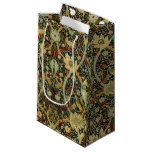
Vintage William Morris Bullerswood Carpet Small Gift Bag http://ift.tt/2kKRWnV
0 notes
Photo

Vintage William Morris Bullerswood Carpet Wine Gift Bag http://ift.tt/2kY1jA2
0 notes
Photo
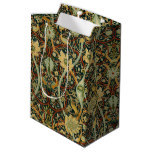
Vintage William Morris Bullerswood Carpet Medium Gift Bag http://ift.tt/2D2pXGX
0 notes